Making a Homemade Bird Feeder
Quick, easy, and inexpensive
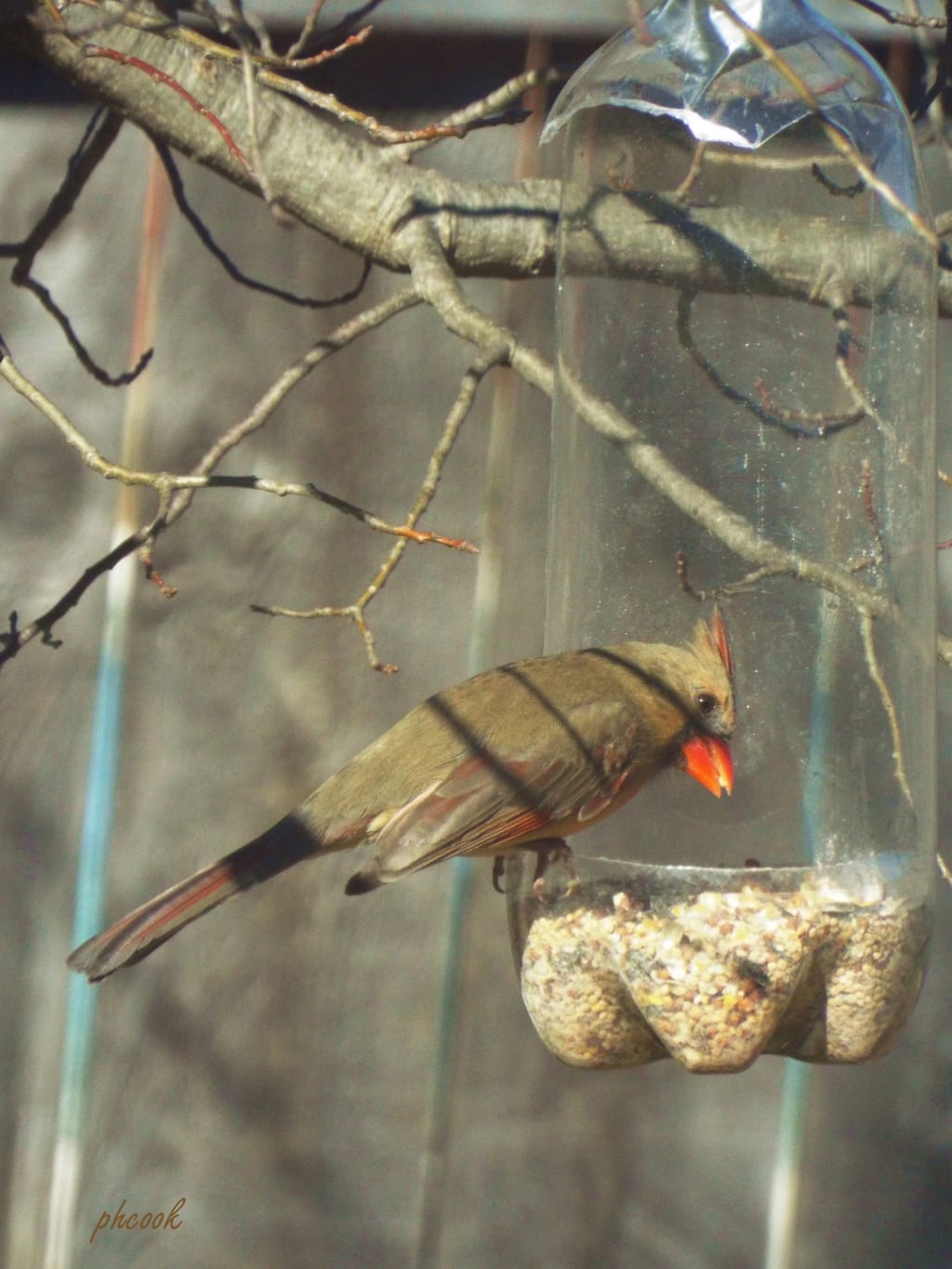
It’s so easy to make a bird feeder using a plastic soda bottle you can do it in three steps and five minutes, and you don’t need any special supplies or talents. They’re functional and good looking, and what more could you ask for?
I love to feed and watch the birds in my yard. I also love soda, so I have lots of empty two-liter bottles. One day I found myself wondering if there was something I could do with those bottles besides dumping them in my recycle bin. (Plus I love to “craft”, so the creative challenge interested me.)
In the past, I’d seen various ideas for reusing plastic bottles for all kinds of things, including sprinklers and watering devices for plants, and even one for a bird feeder. I couldn’t find that tutorial again, but since I had the idea in my head (though what I had in mind was less complicated and professional looking than what I remembered of that one), I didn’t figure it would be too hard to figure it out on my own. And I was right.
I used a two-liter bottle, but any size plastic bottle can be used, so don’t let that limit you.
The first step is to prepare the bottle—take off the wrapper, and wash it out.
The second step is to cut out the opening the bird will use to feed. I started about three inches from the bottom of the bottle and used a box cutter to cut out an opening that went to about three inches from the top and about halfway around the bottle.
Step three is to create the hanger. I had an old cork that I used to create the hanging device and plug the opening at the top of the bottle. I wrapped twine around the cork, and then covered that with duct tape to hold it. Then I fed the twine through the opening, and the bird feeder was done!
I filled it with seed and hung it on the tree, just outside my living room window so I could look out often to see if the birds had found it, and watch when they did. I didn’t know if the birds would use it; I worried that maybe the rough edges of the plastic would be a deterrent, or the shape, or the size of the hole, but I left it out there and hoped.
The very next morning, I saw a cardinal in the feeder, so I knew I had a winner! With my success on the first feeder, I made another and hung it on the tree as well.
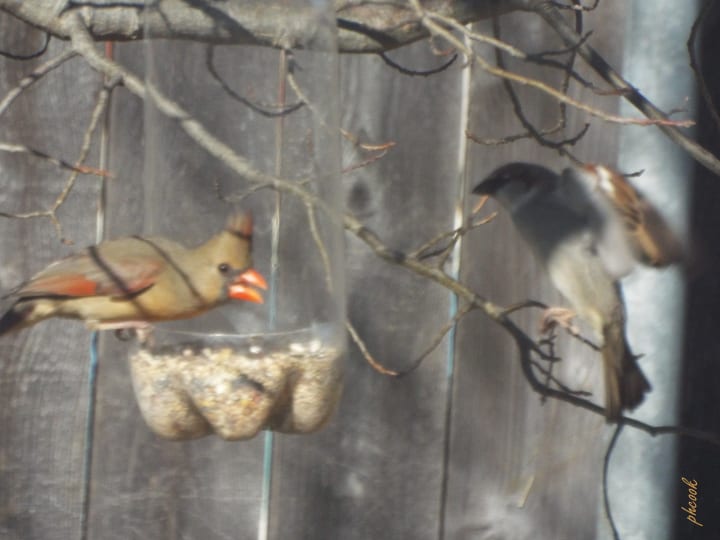
Unfortunately, a few days later I found both feeders on the ground, the twine broken on both. I learned from this, however, and adapted my original creation. I’m not sure why the twine broke. I don’t think they’d been out long enough for the twine to rot due to weather, although I don’t doubt that would have happened in time. It’s possible a squirrel tried to use the feeder and its weight broke the twine.
Either way, I needed to fix it, and the fix I came up with was that I rolled the twine in the duct tape. It’s not as flexible, and it doesn’t look as good as the twine alone did, but it doesn’t really need to, as long as it works. And it does, because the birds are using the new and improved feeders.
Another lesson I learned after making the first feeder was that using a box cutter to cut the bottle made the process harder than it needed to be. The plastic on these bottles is so thin it can easily be cut with scissors, which also makes cutting a more precise hole a lot less complicated.
I like these bird feeders much more than ones I’ve bought because they’re totally clear, and no matter how it turns or moves with the wind, you can see everything about the bird eating, without any obstacles.
Other benefits of making your own bird feeders? They’re free! Crafting is fun! Less plastic in the landfill (or the recycle bin)!
About the Creator
Tricia H
Dog mom, Texan, amateur photographer,crafter, reader, writer.
Enjoyed the story? Support the Creator.
Subscribe for free to receive all their stories in your feed. You could also pledge your support or give them a one-off tip, letting them know you appreciate their work.

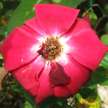
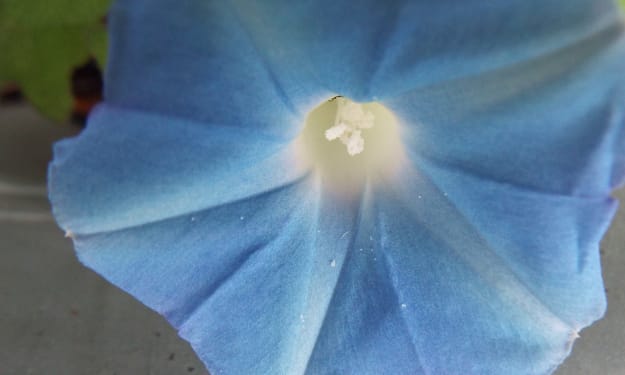

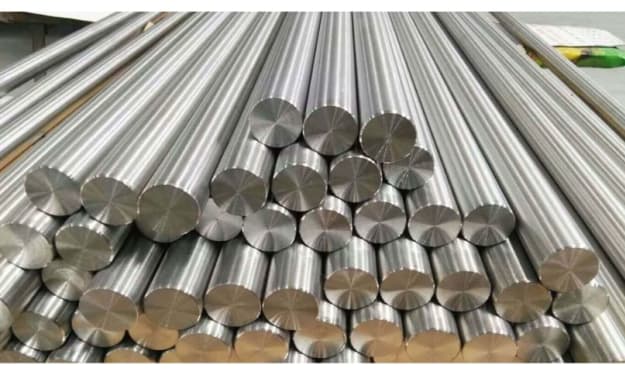

Comments
There are no comments for this story
Be the first to respond and start the conversation.